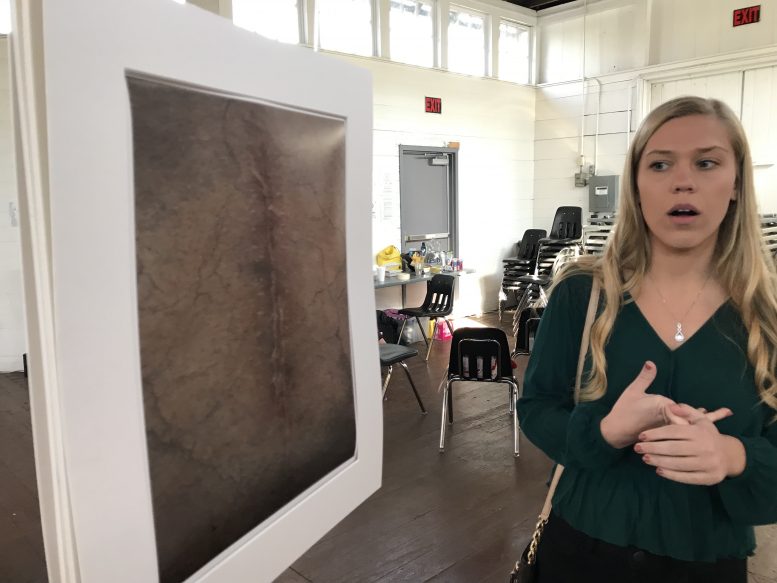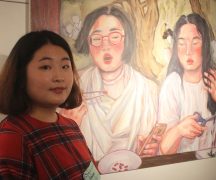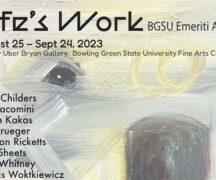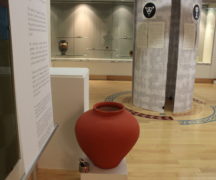By DAVID DUPONT
BG Independent News
As the semester winds down in the Bowling Green State University School of Art student art pours out of the studios and classrooms filling very available space.
Central to these are the main gallery exhibits, the Undergraduate Show and the exhibits featuring bachelor of fine arts and master of fine arts graduates.
At the end of this semester, students in Ruth Burke’s advanced video went even further afield taking over Needle Hall for two evenings for their exhibit “Desire for the Intangible Art.”
Part of the class was finding a venue for the exhibit. Last year, Burke said, the exhibit was held in a small student gallery, but this year she wanted to take it off campus to try to each a broader community.
Burke, whose own work focuses on livestock, liked that the hall started life as a cattle pavilion when the county fair was held in City Park.
“It’s really important for me that students put together a show,” Burke said. “We spent the last three months finding a location, making the work and putting the show together thematically. …Each of these works is reaching for something ephemeral.”
All are subjects that resist being put into tangible form, and yet the students did.
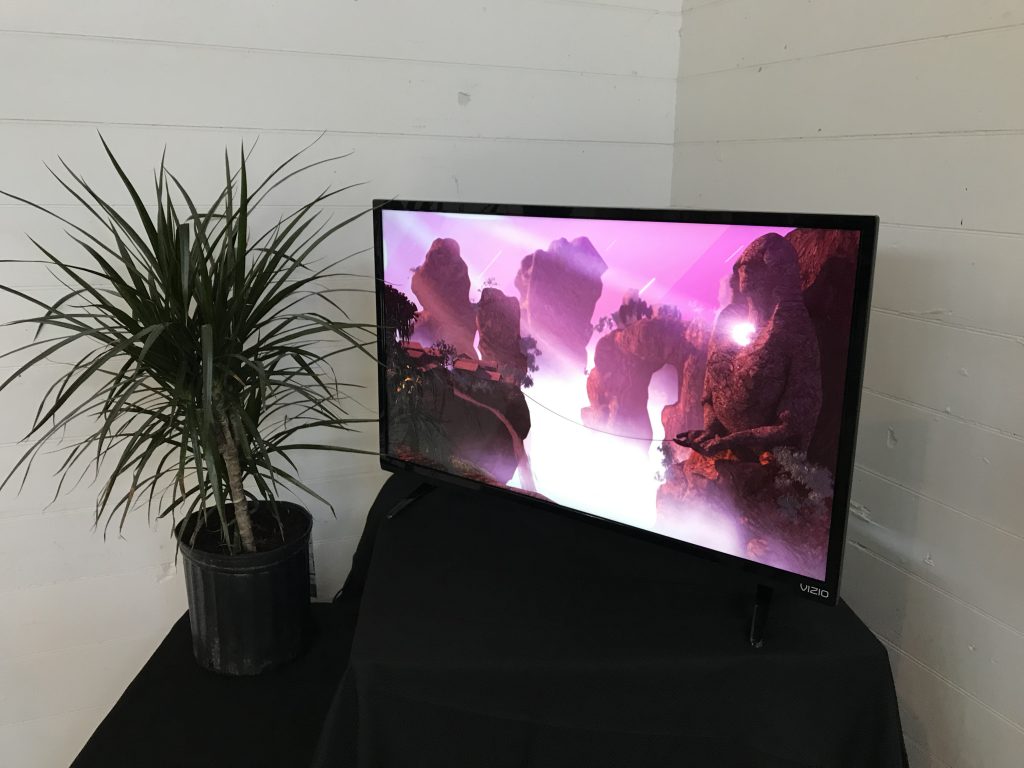
Amber Koprin offered a loving ode to white vinyl siding. She set up a wall with siding, and then projected images of the siding on that wall. It was inspired, Koprin said, by her love of 1980s horror films. The houses in the movies are covered by this siding and promise shelter, yet they could not keep the violence that lurked outside at bay.
In “Restrained,” Natalie Wagschal took on a very real terror, her father’s struggles with neuropathy, a disease that affects the nerve pathways. “The nerves,” she said, “are not sending the right signals.” That leaves her father in constant pain and a state of exhaustion.
No matter how articulate he is, Wagschal said, her father cannot get across the experience, and no one can help him. The only way he can function is with the aid of a stomach pump that injects him with morphine.
Her installation includes distorted images of his scars from multiple operations. In the background, he talks.
Elisha Scott created an animation that expresses just how she feels when she hears a lo-fi instrumental piece by the musician Idealism in her animation “Loneliness.”
Cara Schmidt piece touched on the conundrum of the line between what’s art and what’s design and what belongs on the wall of an exhibit. “Not Art, Not Design” is a concept for all-in-one note taking website.
The piece looks like a page from the website, but there is no website. “I can’t code,” Schmidt said, adding she would like with help to create the site.
Several students addressed environmental concerns.
Shane Wever is studying marine biology and developed his own academic minor in conservation through media. Drawing on his experience working for a coral restoration foundation in the Caribbean, he created a video of coral and sea life.
His aim is to present the case for conservation “in a positive and well constructed way.”
Emily Sullivan also used video from local parks to show the almost imperceptible ways humans encroach on nature. “Cities are moving in on nature,” she said. “We find it beautiful but in doing this, we’re taking away from it.”
Stephanie Childers presented an otherworldly video landscape based on two paintings she had done. “Otherworld” evokes an image from a video game. Yet video games offer instant gratification while her slowly involving depiction of a majestic mountainscape demands patience as the light slowly fades, birds appear, sounds shift and stars emerge.
Sarah Gorges created her own set of tarot cards. “I feel humans do not appreciate animals for who they are.” Through plastics and pollution animals are being pushed to extinction. Yet humans have long ascribed sacred qualities to animals. Each card touches on these qualities, she said.
Jana Dean tackled an issue of how humans treat each other. Because she was working during Sexual Assault Awareness week, she took that as her theme.
She worked with a woman who had been sexually assaulted, and took a series of photos and interviewed her. The project was a close collaboration, Dean said. The subject saw and approved all the images and words that went into the work.
“A lot of women, and men, are becoming increasingly more aware that sexual assault is a very common occurrence. People are coming forward with their stories.”
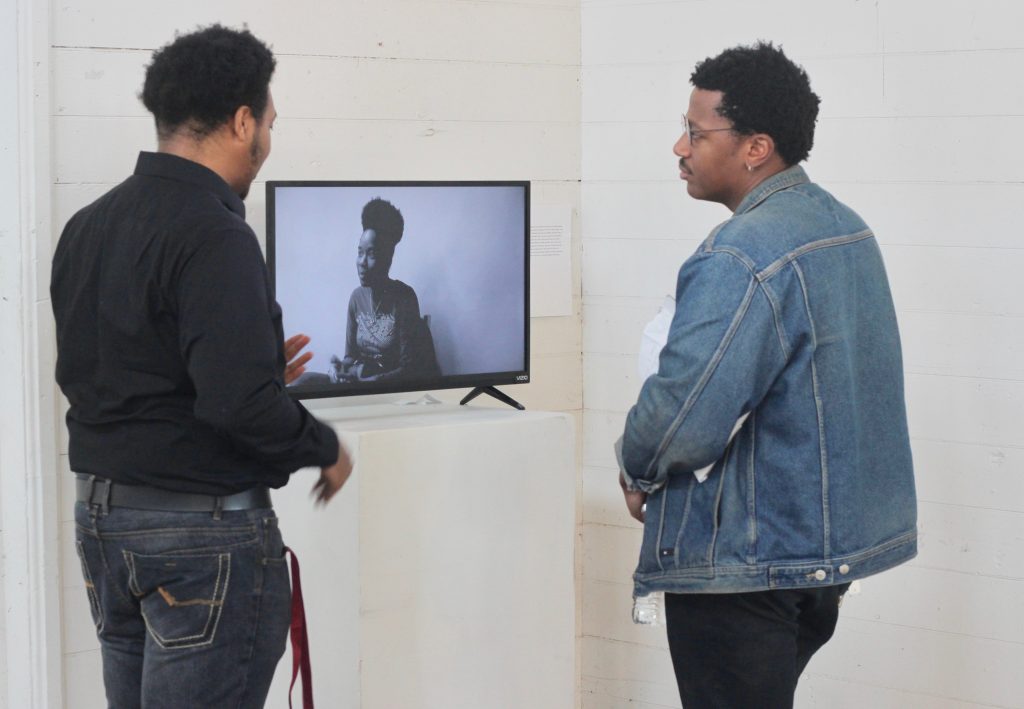
Devon Talley-Isom wanted to capture what the college experience means in the video “Assimilation.”
“Every student has their own experience,” he said, “and my piece wants to exemplify that” while at the same time touching on common themes.
Talley-Isom came to BGSU four years ago from Cleveland “a much different place from BG.”
He said: “You have to get used to this small town where everybody knows everybody.” And it was not easy at first, but “now I love everything about it.”
He interviewed three people from diverse backgrounds, studying art, communications, and social work, and asked them about the pressures to conform and what college culture means to them.
Alexis Rubertino didn’t talk to her subjects, or even see them. She just looked inside their cars.
While people want privacy, they expose their lives through what they leave in plain view. A Wendy’s gift card or a handwritten affirmation.
The car, she said, is at once a contained space, and yet it’s always open to view.
In its own way, “Desire for the Intangible” offered its own view into the students’ private views of the world around them.

